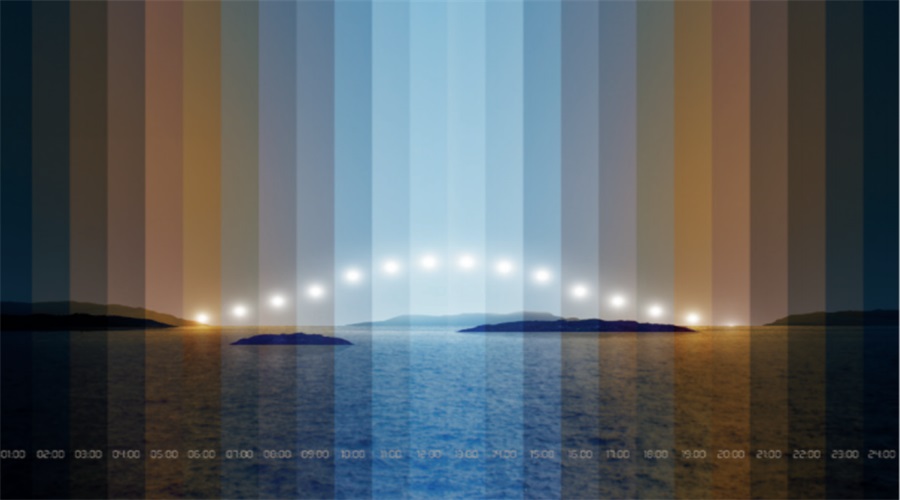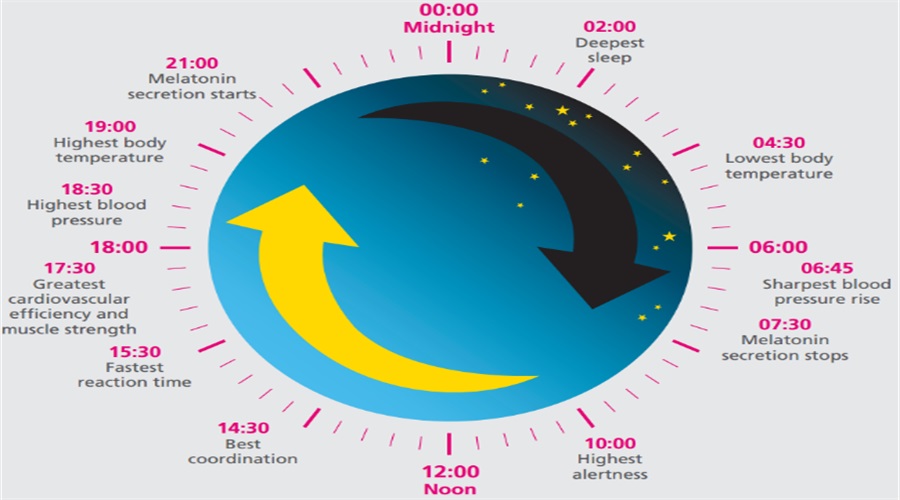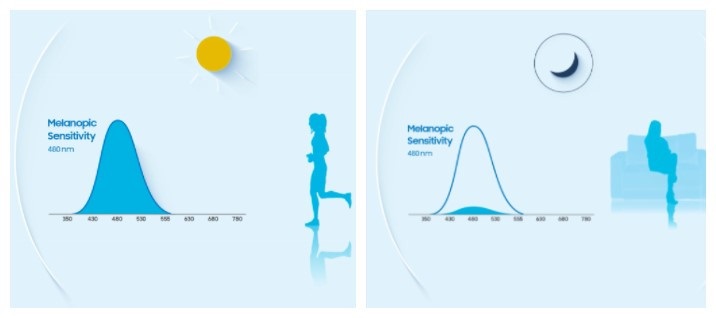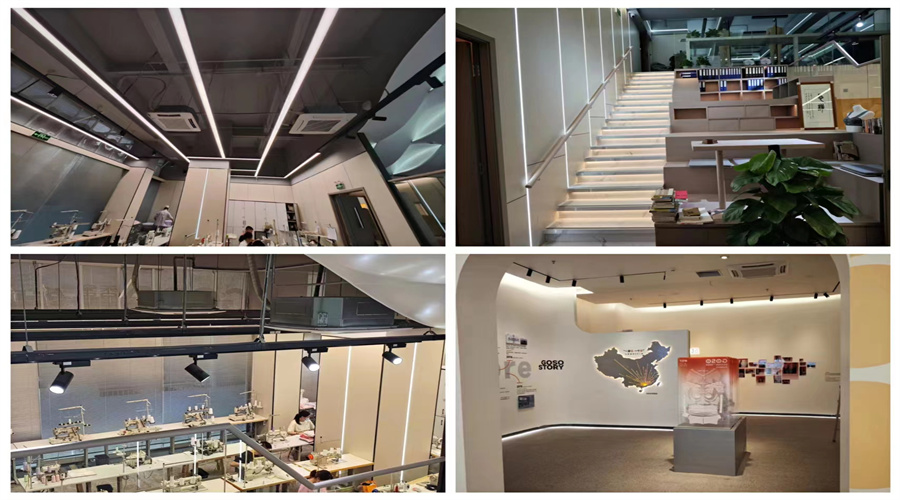صبح جو، اهو الارم ڪلاڪ آهي، پهرين روشني يا توهان جي پنهنجي حياتياتي ڪلاڪ جيڪا توهان کي جاڳائي ٿي؟
تحقيق ڏيکاري ٿي ته 5 عنصر انساني جسماني تال تي اثر انداز ڪن ٿا:
1. انساني اک تي روشني واري واقعي جي شدت
2. روشني جي چشمي خاصيتون
3. روشني جي نمائش جو وقت
4. روشني جي نمائش جو عرصو
5. فرد جي روشني جي تاريخ
ماڻهو، ٻوٽن وانگر، روشني کان سواء رهي نٿا سگهن.
ٻوٽن کي واڌ ويجهه لاءِ فتوسنتيسس جي ضرورت آهي، جڏهن ته ٻئي طرف، اسان کي روشني جي ضرورت آهي ته جيئن اسان جي حياتياتي گھڙي کي هلندي رهي ۽ 24 ڪلاڪن جي سرڪيڊين تال سان هم وقت سازي ٿئي.
زمين جي هڪ گردش 24 ڪلاڪ آهي، ۽ ڏينهن ۽ رات جي قدرتي تال جسم جي عمل کي منظم ڪري ٿو ۽ اسان جي رويي ۽ جذبات کي متاثر ڪري ٿو.
2002 ۾، خود مختيار فوٽو ريسيپٽر ريٽينل گنگليون سيلز دريافت ڪيا ويا، ۽ تحقيق ظاهر ڪيو ته اهو دماغ جي اعصاب جي آپريشنل سسٽم کي غير بصري سطح تي متاثر ڪري ٿو، اهڙي طرح روشني ۽ صحت تي تحقيق کي کوليو.
روشنيءَ جي حلن ۾ روشنيءَ جي تال کي صحيح طور تي منظم ڪري سگهجي ٿو انساني جسم جي صحت مند روشنيءَ جي ضرورت مطابق، غير بصري حياتياتي اثرن جي ماڊلوليشن جي ڪري.
1. انساني melatonin secretion جو مؤثر ضابطو
رات جو ننڊ نه اچڻ، ننڊ نه اچڻ، توانائيءَ جي کوٽ ۽ ڏينهن ۾ توجهه نه هئڻ، هي رجحان melatonin سان واسطو رکي ٿو. "انساني تال جي روشني" ٽيڪنالاجي melatonin جي گہرے مطالعي تي ٻڌل آهي ته جيئن روشني جي ڪارڪردگي کي گهٽ ۾ گهٽ ممڪن نقصان سان روشني جي ڪارڪردگي کي مؤثر انداز سان توازن ڪري.
اهو مؤثر طريقي سان 480nm ويڪرائيندڙ بينڊ ۾ نيري-سائي روشني کي ڪنٽرول ڪندي melatonin جي رطوبت کي منظم ڪري سگهي ٿو. ڏينهن جي وقت ۾، اهو melatonin جي ڇڏڻ کي روڪي سگهي ٿو انهي کي يقيني بڻائڻ ته جسم ڏينهن دوران مڪمل توانائي برقرار رکي. رات جو، اهو melatonin جي ڇڏڻ کي فروغ ڏئي سگهي ٿو، تنهنڪري جسم کي ڪافي آرام ۽ آرام حاصل ڪري سگهي ٿو.
2. ھڪڙو "صحتمند" اسپيڪٽرم ٺاھيو
هڪ نظرياتي سيمي ڪنڊڪٽر ٽيڪنالاجي جي طور تي، "SunLike" LEDs ڳاڙهي، نارنگي، پيلي، سائي، سائي، نيري ۽ واڱڻائي جي قدرتي روشني واري اسپيڪٽرم وکر کي مختلف موج جي ڊيگهه تي ٻيهر پيدا ڪرڻ جي قابل آهن، تقريبن ساڳئي خاصيتن کي ظاهر ڪن ٿيون جيئن قدرتي روشني ۽ انساني سرڪيڊين کي بهتر ڪرڻ. تال مطابق. في الحال، SunLike ٽيڪنالاجي وڏي پيماني تي تجارتي، تعليمي، سمارٽ گهر ۽ ٻين روشني واري منظرنامي ۾ استعمال ٿئي ٿي.
مڪمل اسپيڪٽرم جو مطلب آهي سج جي روشني کي ٻيهر پيدا ڪرڻ.
في الحال، مارڪيٽ شروع ڪيو انساني فڪر جي روشني جي شين، جديد اسپيڪٽرم ترتيب ڏيڻ وارو الگورتھم، مڪمل اسپيڪٽرم جي تخليق کي وڌائي سگھي ٿو، حقيقي قدرتي روشني کي بحال ڪري، توھان گھر ۾ قدرتي روشني مان لطف اندوز ڪري سگھو ٿا.
سج جي روشنيءَ جي تخليق سان گڏ سڄي سال جي شروعات کان اڌ رات جي مختلف وقتن ۾ رنگ جي گرمي پد ۾ تبديليون، چمڪ ۾ تبديليون، مڪمل اسپيڪٽرم LED وڌيڪ مهيا ڪري سگهي ٿي جهڙوڪ حقيقي قدرتي روشني، مضبوط رنگ جي پيداوار جي صلاحيت، رنگ ريڊرنگ انڊيڪس 100 جي ويجهو (Ra> 97,CRI>95,Rf>95,Rg>98)، جڏهن ته تجويز ڪيل UGR قدر 14 ~ 19 جي وچ ۾، انهي ڪري ته آفيس جا ڪارڪن، شاپنگ مال ملازم، گراهڪ، وغيره گهر ڇڏڻ کان سواءِ قدرتي صحتمند روشني محسوس ڪري سگهن ٿا، انساني جسمانيات، نفسيات، انساني صحت ۾ قدرتي روشني جي ڪردار کي ٻيهر آڻين.
ذھني ڪنٽرول سسٽم ذريعي انساني سانس جي دل جي ڌڙڪن کي سڃاڻڻ ۽ آزاد روشني کي آن ۽ آف ڪرڻ لاءِ، حاصل ڪرڻ لاءِ ”ماڻهو روشني ۾ اچن ٿا، ماڻهو روشنيءَ کي ڇڏي ڏين ٿا“. انهي سان گڏ روشني واري ماحول جي گرمي ۽ نمي جي حقيقي وقت جي نگراني جي ذريعي، روشني جي حالتن، ته جيئن لیمپ ۽ لالٽين جي روشني کي مناسب حد تائين برقرار رکڻ لاء، جڏهن سج جي روشني جي شدت گهٽجي ويندي آهي، لیمپ ۽ لالٽين پاڻمرادو روشن ٿي ويندا آهن؛ جڏهن سج جي روشنيءَ جي شدت وڌي ويندي آهي، تڏهن ڏيئا ۽ لالٽينون پاڻمرادو مدھم ٿي وينديون آهن. اهي تبديليون انساني جسم جي قدرتي فزيولوجيڪل تال (حياتياتي گھڙي) سان مطابقت رکن ٿيون، جيڪي ماڻهن کي قدرتي روشني وانگر آرامده ۽ صحتمند محسوس ڪري سگهن ٿيون، ۽ مختلف وقتن جي دورن لاءِ هڪ بهتر روشني وارو ماحول مهيا ڪري سگهن ٿيون.
3. بصري روشني ڊيزائن جي ضرورتن سان متحد
بصري لائٽنگ ڊيزائن روشنيءَ واري ماحول جي نمائش، جمالياتي ۽ آرام تي زور ڏئي ٿي، جڏهن ته غير بصري اثرات جي بنياد تي تال جي روشني انساني اکين ۾ داخل ٿيندڙ محيطي روشنيءَ جي ڪري ريٽينل نيورولوجيڪل اثرن تي ڌيان ڏئي ٿي، جنهن ۾ ڪنن جي روشني ۽ اسپيڪٽرل پاور ورهائڻ ان جي اهم حيثيت رکي ٿي. اشارا.
4. روشني جي شين ۾ تال جي ضابطي جي تصور کي لاڳو ڪرڻ
تال جي ضابطي جو تصور روشني جي شين ۾ لاڳو ڪيو ويو آهي گراهڪن کي مهيا ڪرڻ لاءِ فوٽو بايولوجيڪل اثر لائٽنگ حل جيڪي ڏينهن جي روشني جي حالتن ۽ موسم جي حالتن جي بنياد تي تال جي استحڪام ۾ مدد ڪن ٿا.
منظرنامي جي تجربي واري ماڊل کي هڪ طريقي جي طور تي استعمال ڪندي، اسان مختلف علائقن جي مطابق مختلف رنگن جي گرمي پد مهيا ڪندا آهيون ۽ خاص بصري ٽيڪنالاجي استعمال ڪندا آهيون جيڪا مختلف ليمپن جي روشنيءَ جي پيداوار کي ملائي گرم ۽ ٿڌي روشنيءَ جي وچ ۾ توازن حاصل ڪرڻ لاءِ، ڏينهن ۽ رات جي قدرتي تال جي نقل ڪندي، انساني جسم کي صحت جي جواب ڏيڻ لاء ماحول کي ترتيب ڏئي سگهجي ٿو.
پوسٽ جو وقت: فيبروري-02-2023










